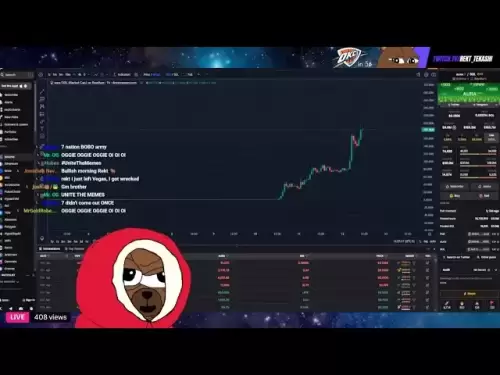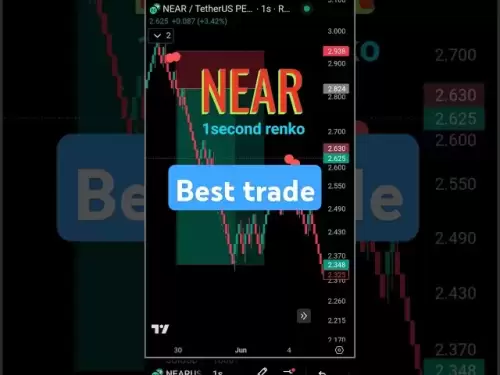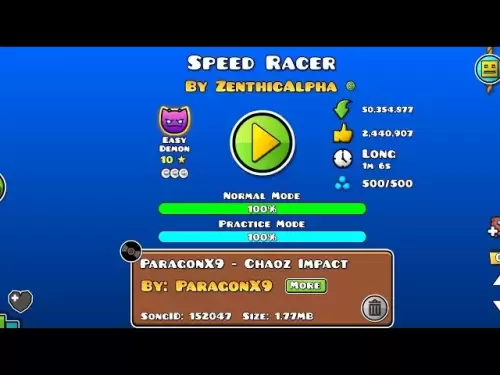-
 Bitcoin
Bitcoin $104,522.6322
-3.13% -
 Ethereum
Ethereum $2,523.2617
-8.98% -
 Tether USDt
Tether USDt $1.0004
0.05% -
 XRP
XRP $2.1152
-5.86% -
 BNB
BNB $652.2893
-2.33% -
 Solana
Solana $144.6351
-9.37% -
 USDC
USDC $0.9995
-0.03% -
 Dogecoin
Dogecoin $0.1735
-9.24% -
 TRON
TRON $0.2736
-0.43% -
 Cardano
Cardano $0.6326
-8.58% -
 Hyperliquid
Hyperliquid $38.5159
-8.14% -
 Sui
Sui $2.9977
-10.56% -
 Chainlink
Chainlink $13.2026
-9.28% -
 UNUS SED LEO
UNUS SED LEO $8.9820
1.39% -
 Bitcoin Cash
Bitcoin Cash $416.2011
-3.39% -
 Stellar
Stellar $0.2574
-7.06% -
 Avalanche
Avalanche $19.0069
-10.26% -
 Toncoin
Toncoin $2.9777
-7.56% -
 Shiba Inu
Shiba Inu $0.0...01168
-9.04% -
 Hedera
Hedera $0.1545
-9.05% -
 Litecoin
Litecoin $83.5565
-7.17% -
 Polkadot
Polkadot $3.8099
-7.40% -
 Ethena USDe
Ethena USDe $1.0004
-0.02% -
 Monero
Monero $313.0679
-4.12% -
 Dai
Dai $0.9998
0.00% -
 Bitget Token
Bitget Token $4.5157
-4.11% -
 Uniswap
Uniswap $7.3677
-9.10% -
 Pepe
Pepe $0.0...01065
-15.22% -
 Aave
Aave $279.7196
-6.75% -
 Pi
Pi $0.5464
-13.61%
How to judge the direction when the Bollinger Bands suddenly expand after closing? Is it a real breakthrough or a false signal?
After Bollinger Bands expand, assess breakouts using volume, price action, and indicators like RSI and MACD to determine if it's a true move or a false signal.
Jun 10, 2025 at 06:21 am
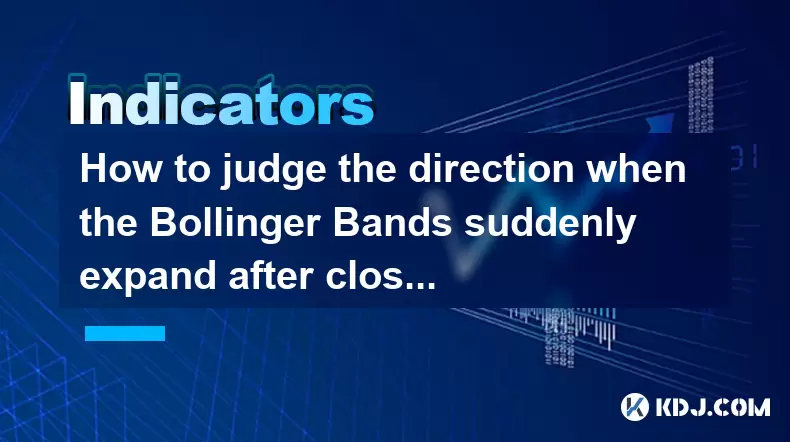
When the Bollinger Bands suddenly expand after closing, traders often face the challenge of determining whether this movement indicates a genuine breakout or a false signal. This article will guide you through the process of evaluating such scenarios, focusing on key indicators and methodologies within the cryptocurrency trading sphere.
Understanding Bollinger Bands and Their Expansion
Bollinger Bands are a technical analysis tool developed by John Bollinger. They consist of a middle band being a simple moving average (SMA) usually set at 20 periods, with an upper band and a lower band set at two standard deviations above and below the SMA, respectively. The expansion of Bollinger Bands occurs when volatility increases, causing the bands to widen.
When the bands expand after closing, it typically signals a significant price movement. However, distinguishing whether this movement is a true breakout or a false signal requires a deeper analysis.
Key Indicators to Assess Breakouts
To accurately judge the direction after a sudden expansion of Bollinger Bands, consider the following key indicators:
- Volume: A breakout accompanied by high trading volume is more likely to be a true breakout. High volume indicates strong interest and commitment from traders, suggesting that the price movement is sustainable.
- Price Action: Look for clear and decisive price movements. A true breakout often shows a strong move away from the Bollinger Bands, while a false signal may see the price quickly returning within the bands.
- Other Technical Indicators: Combining Bollinger Bands with other indicators such as the Relative Strength Index (RSI) or Moving Average Convergence Divergence (MACD) can provide additional confirmation. For instance, if the RSI is also showing overbought or oversold conditions, it can help validate the breakout.
Analyzing Volume for Confirmation
Volume is a critical factor in confirming whether a breakout is genuine. Here's how to analyze volume in the context of Bollinger Bands expansion:
- High Volume Breakout: If the price breaks out of the Bollinger Bands with significantly higher volume than the average, it suggests that the move is backed by strong market interest. This is often a sign of a true breakout.
- Low Volume Breakout: Conversely, if the breakout occurs on low volume, it may indicate a lack of conviction among traders. This scenario is more likely to result in a false signal, as the price may revert back within the bands.
Assessing Price Action and Patterns
Price action and patterns can provide additional clues about the nature of the breakout:
- Strong and Sustained Move: A true breakout will often be characterized by a strong and sustained move away from the Bollinger Bands. If the price continues to move in the breakout direction without significant pullbacks, it's a sign of a genuine breakout.
- Quick Reversal: If the price quickly reverses back into the Bollinger Bands after an initial breakout, it is likely a false signal. This indicates that the initial move lacked the necessary momentum to sustain a breakout.
Using Other Technical Indicators for Validation
Incorporating other technical indicators can help validate the signals provided by Bollinger Bands:
- Relative Strength Index (RSI): If the RSI is also showing overbought conditions during an upward breakout or oversold conditions during a downward breakout, it can confirm the validity of the move.
- Moving Average Convergence Divergence (MACD): If the MACD shows a bullish crossover during an upward breakout or a bearish crossover during a downward breakout, it can provide additional confirmation of the breakout's direction.
Practical Steps to Judge the Direction
To practically assess whether a breakout after Bollinger Bands expansion is real or false, follow these steps:
- Monitor the Volume: Check the volume bars or volume indicators on your trading platform. Look for a significant increase in volume compared to the recent average.
- Analyze Price Action: Observe the price movement after the breakout. Is it strong and sustained, or does it quickly reverse?
- Use Additional Indicators: Apply other technical indicators like RSI or MACD to see if they confirm the breakout direction.
- Wait for Confirmation: Sometimes, waiting for a candlestick or two after the initial breakout can provide clearer signals. If the price continues to move in the breakout direction, it's more likely a true breakout.
Case Study: Analyzing a Cryptocurrency Breakout
Let's consider a hypothetical scenario where Bitcoin's price experiences a sudden expansion of Bollinger Bands after closing. The price breaks above the upper Bollinger Band, and the following steps are taken to judge the direction:
- Volume Analysis: The volume during the breakout is 50% higher than the average volume of the past week. This suggests strong market interest and a potential true breakout.
- Price Action: The price continues to move upwards, closing above the upper Bollinger Band for the next two candlesticks. This indicates a sustained move, further supporting the breakout's validity.
- RSI and MACD Confirmation: The RSI is at 75, indicating overbought conditions, and the MACD shows a bullish crossover. Both indicators confirm the upward breakout.
In this case, the combination of high volume, sustained price movement, and confirming signals from other indicators suggests a true breakout.
Frequently Asked Questions
Q: Can Bollinger Bands be used effectively in all market conditions?
A: Bollinger Bands are most effective in markets with clear trends and volatility. In sideways or low-volatility markets, the bands may remain narrow for extended periods, making it challenging to identify breakouts.
Q: How often should I check the Bollinger Bands for potential breakouts?
A: The frequency of checking Bollinger Bands depends on your trading style. Day traders might check multiple times a day, while swing traders might check daily or weekly. It's important to align your analysis with your trading strategy.
Q: Are there any other indicators that work well with Bollinger Bands?
A: Yes, indicators like the Average True Range (ATR) can complement Bollinger Bands by providing additional insights into market volatility. Additionally, trend indicators like the ADX can help confirm the strength of a breakout.
Q: Can false signals be minimized by adjusting the Bollinger Bands settings?
A: Adjusting the settings of Bollinger Bands, such as the period of the SMA or the number of standard deviations, can influence the sensitivity of the indicator. However, while this might help reduce false signals, it could also increase the risk of missing genuine breakouts. It's essential to find a balance that suits your trading strategy.
Disclaimer:info@kdj.com
The information provided is not trading advice. kdj.com does not assume any responsibility for any investments made based on the information provided in this article. Cryptocurrencies are highly volatile and it is highly recommended that you invest with caution after thorough research!
If you believe that the content used on this website infringes your copyright, please contact us immediately (info@kdj.com) and we will delete it promptly.
- Shiba Inu (SHIB) Burn Rate Spikes, Alongside a Rise in Whale Transactions and Daily Transactions
- 2025-06-13 15:10:12
- German Financial Intelligence Unit (FIU) Sees 8% Jump in Suspicious Activity Reports Related to Crypto Transactions
- 2025-06-13 15:10:12
- Fartcoin (FARTCOIN), a Solana-based meme token, remained under pressure despite a brief rebound ahead of its Coinbase listing.
- 2025-06-13 15:05:12
- Cryptocurrency lending firm Maple Finance has partnered with crypto staking specialist Lido Finance
- 2025-06-13 15:05:12
- Is altcoin season coming? Coinbase lists several new altcoins, including utility tokens like $CAKE and $SQD
- 2025-06-13 15:00:11
- FLOKI is Demonstrating Positive Signs of Upward Trend Movement and Establishing a Foothold around the $0.00009320 Level
- 2025-06-13 15:00:11
Related knowledge
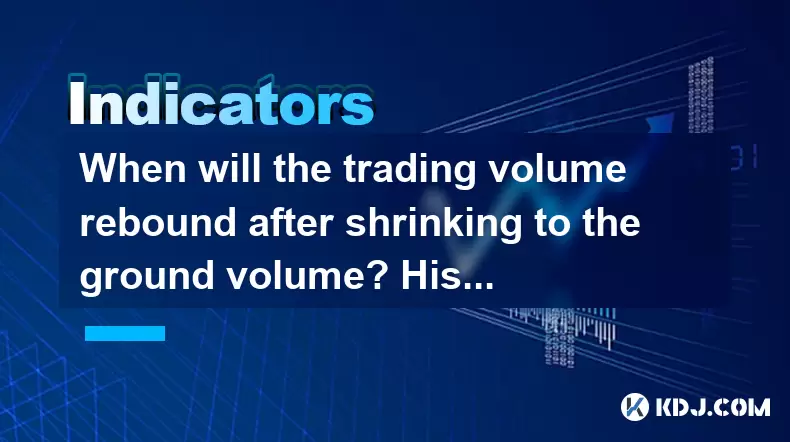
When will the trading volume rebound after shrinking to the ground volume? Historical percentile comparison method
Jun 13,2025 at 03:36pm
Understanding the Ground Volume Concept in Cryptocurrency MarketsIn cryptocurrency trading, 'ground volume' refers to a period when the trading volume of a particular asset or market drops significantly, often reaching multi-month or even multi-year lows. This phenomenon typically signals a lack of interest from traders and investors, suggesting that th...

How to read the CR indicator's four lines that diverge and then converge? Key pressure point identification skills
Jun 13,2025 at 12:21pm
Understanding the CR Indicator in Cryptocurrency TradingThe CR indicator, also known as the Chikin Ratio or Chaikin Oscillator, is a technical analysis tool widely used in cryptocurrency trading to gauge momentum and potential price reversals. It combines volume and price data to provide traders with insights into market strength and weakness. The indic...

What should I do if the ASI vibration rise and fall indicator is not synchronized with the price? When should I believe in the indicator?
Jun 13,2025 at 12:29pm
Understanding the ASI Vibration Rise and Fall IndicatorThe Accumulation Swing Index (ASI) is a technical indicator developed by Welles Wilder to help traders identify potential reversals and confirm trends in price movements. The vibration rise and fall aspect of the ASI refers to how the line oscillates above and below its zero line, indicating shifts ...
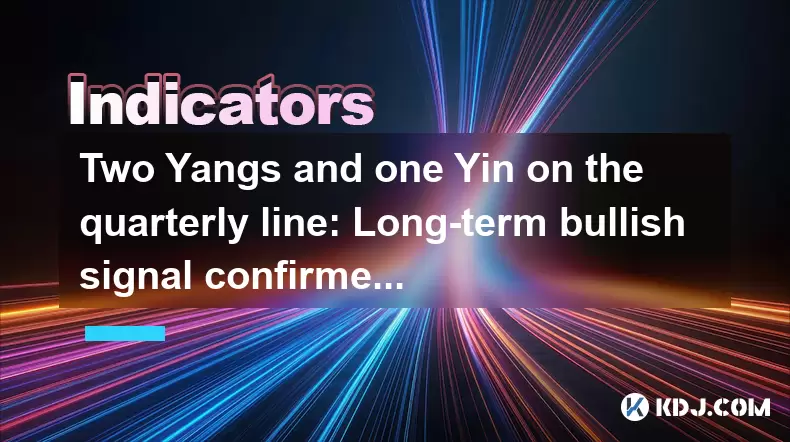
Two Yangs and one Yin on the quarterly line: Long-term bullish signal confirmed?
Jun 12,2025 at 07:00am
Understanding the 'Two Yangs and One Yin' Candlestick PatternIn technical analysis, candlestick patterns play a pivotal role in identifying potential market reversals or continuations. The 'Two Yangs and One Yin' pattern is one such formation that traders often observe on longer timeframes like the quarterly chart. This pattern consists of two bullish (...
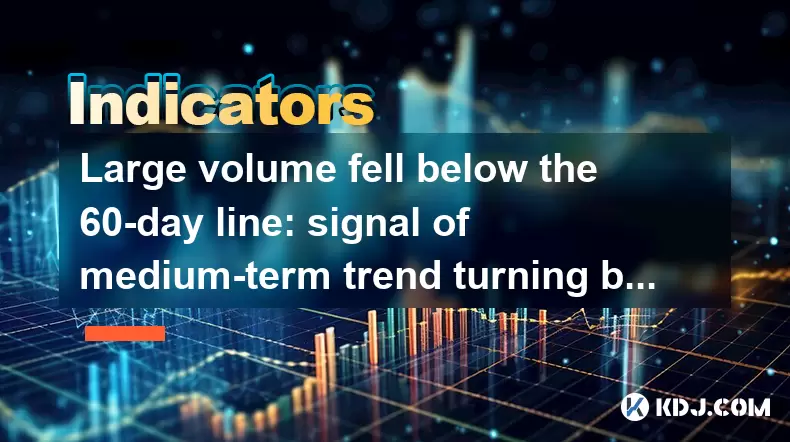
Large volume fell below the 60-day line: signal of medium-term trend turning bearish?
Jun 13,2025 at 03:42am
Understanding the 60-Day Moving Average in CryptocurrencyIn cryptocurrency trading, technical analysis plays a crucial role in predicting price movements. One of the most commonly used indicators is the 60-day moving average (MA), which smooths out price data over the last 60 days to provide traders with insights into the medium-term trend. When large v...
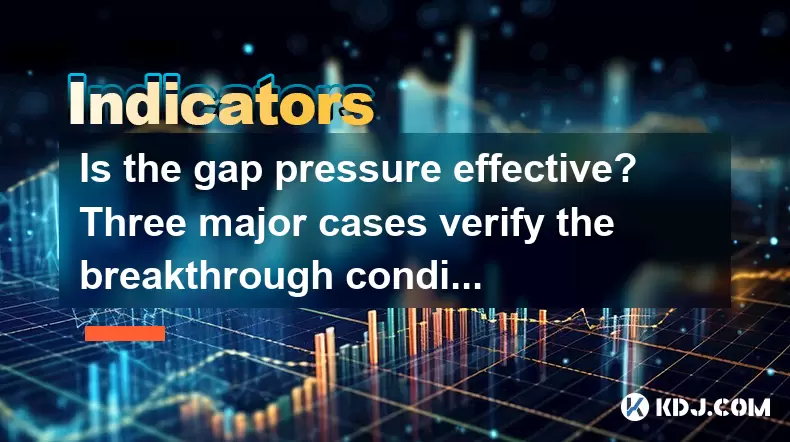
Is the gap pressure effective? Three major cases verify the breakthrough conditions
Jun 13,2025 at 04:35am
Understanding the Gap Pressure in Cryptocurrency TradingIn cryptocurrency trading, gap pressure refers to a technical analysis concept where price gaps form due to sudden market movements. These gaps often occur between the closing price of one trading session and the opening price of the next. Traders pay close attention to these gaps because they can ...

When will the trading volume rebound after shrinking to the ground volume? Historical percentile comparison method
Jun 13,2025 at 03:36pm
Understanding the Ground Volume Concept in Cryptocurrency MarketsIn cryptocurrency trading, 'ground volume' refers to a period when the trading volume of a particular asset or market drops significantly, often reaching multi-month or even multi-year lows. This phenomenon typically signals a lack of interest from traders and investors, suggesting that th...

How to read the CR indicator's four lines that diverge and then converge? Key pressure point identification skills
Jun 13,2025 at 12:21pm
Understanding the CR Indicator in Cryptocurrency TradingThe CR indicator, also known as the Chikin Ratio or Chaikin Oscillator, is a technical analysis tool widely used in cryptocurrency trading to gauge momentum and potential price reversals. It combines volume and price data to provide traders with insights into market strength and weakness. The indic...

What should I do if the ASI vibration rise and fall indicator is not synchronized with the price? When should I believe in the indicator?
Jun 13,2025 at 12:29pm
Understanding the ASI Vibration Rise and Fall IndicatorThe Accumulation Swing Index (ASI) is a technical indicator developed by Welles Wilder to help traders identify potential reversals and confirm trends in price movements. The vibration rise and fall aspect of the ASI refers to how the line oscillates above and below its zero line, indicating shifts ...

Two Yangs and one Yin on the quarterly line: Long-term bullish signal confirmed?
Jun 12,2025 at 07:00am
Understanding the 'Two Yangs and One Yin' Candlestick PatternIn technical analysis, candlestick patterns play a pivotal role in identifying potential market reversals or continuations. The 'Two Yangs and One Yin' pattern is one such formation that traders often observe on longer timeframes like the quarterly chart. This pattern consists of two bullish (...

Large volume fell below the 60-day line: signal of medium-term trend turning bearish?
Jun 13,2025 at 03:42am
Understanding the 60-Day Moving Average in CryptocurrencyIn cryptocurrency trading, technical analysis plays a crucial role in predicting price movements. One of the most commonly used indicators is the 60-day moving average (MA), which smooths out price data over the last 60 days to provide traders with insights into the medium-term trend. When large v...

Is the gap pressure effective? Three major cases verify the breakthrough conditions
Jun 13,2025 at 04:35am
Understanding the Gap Pressure in Cryptocurrency TradingIn cryptocurrency trading, gap pressure refers to a technical analysis concept where price gaps form due to sudden market movements. These gaps often occur between the closing price of one trading session and the opening price of the next. Traders pay close attention to these gaps because they can ...
See all articles





















